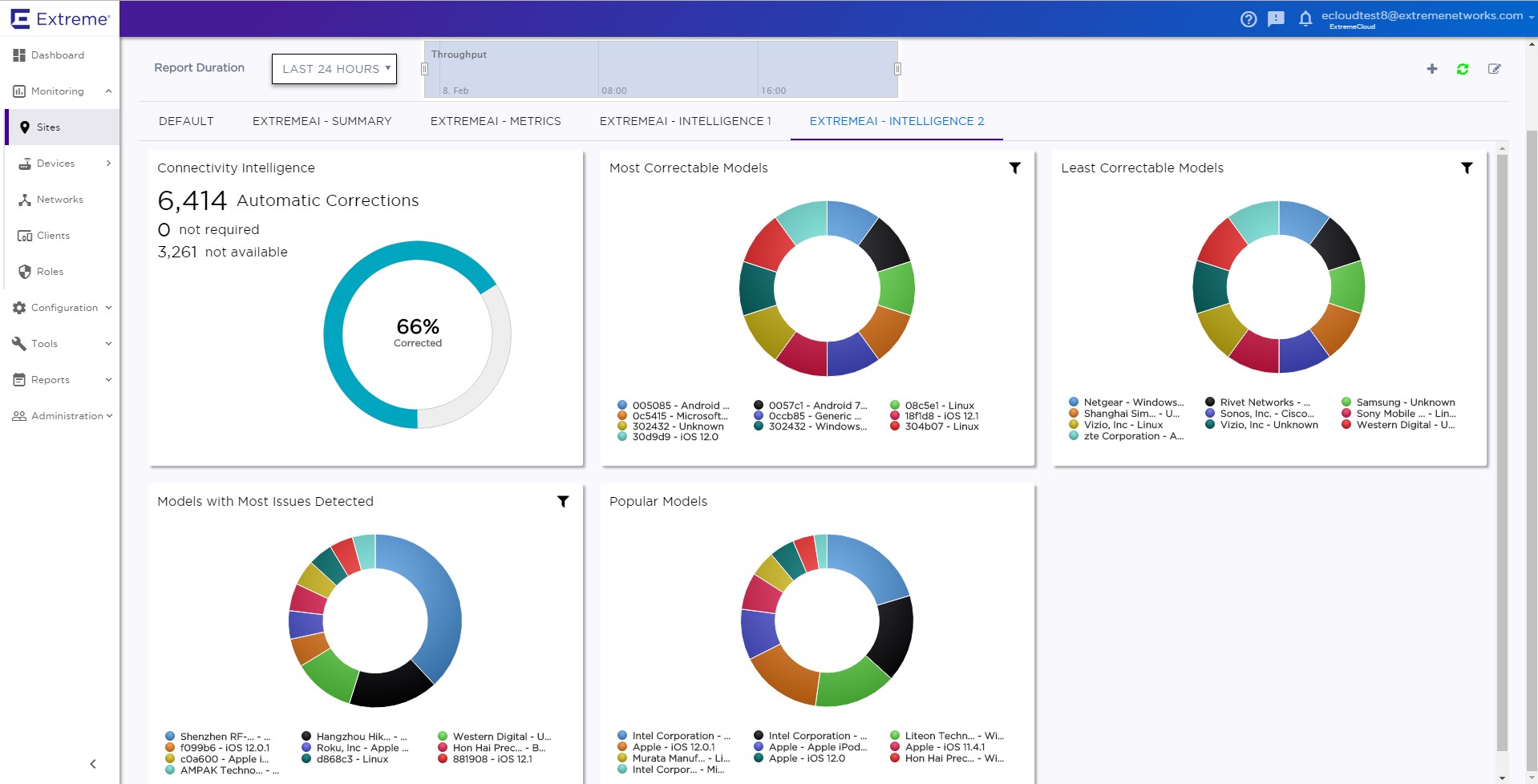
As business-critical systems, wireless LANs demand flawless operation. They are crucial to enterprises. Not only do they connect people, but they also enable everything from point-of-sale systems to enterprise applications, real-time communication, video conferencing, and more. But they’re becoming increasingly complex to manage with an onslaught of new devices connecting to the network.

[ExtremeAI for Smart OmniEdge: Wi-Fi performance at a glance]
RF management of Wi-Fi networks is one of the most daunting and complex tasks for IT administrators. RF depends on the physical environment and may be impacted by many environmental factors and interference sources:
Automatic channel and power settings, client steering, load-balancing, client roaming optimization, QoS, and more, require many parameters to adjust for optimal Wi-Fi performance. As RF environments increase in complexity, it becomes unwieldy to monitor and adjust these parameters in an on-going manner.
RF management is one area where Artificial Intelligence (AI) and Machine Learning (ML) can assist. AI/ML technologies can be leveraged to monitor the RF, collect information from the radios of all the access points (and potentially some clients), and automatically tune AP channels and power to achieve optimum performance in any environment. The longer the network is in operation, the more historical information is gathered which may be used to further improve and tune the network.

[ExtremeAI for Smart OmniEdge proactively detects and mitigates issues]
ExtremeAI for Smart OmniEdge (ExtremeAI – RF) leverages AI/ML to deliver an enhanced networking experience for both IT staff and end-users. Using machine learning to collect network analytics, device statistics, and user and application experience characteristics, ExtremeAI for Smart OmniEdge applies sophisticated algorithms to automate WLAN configuration, while proactively troubleshooting, remediating, and dynamically optimizing the Wi-Fi network. Such automation significantly improves the mobile user experience and reduces the workload on network engineers.
Key benefits of ExtremeAI for Smart OmniEdge include:
As with autonomous cars, the era of the Autonomous Enterprise is upon us. Solutions such as ExtremeAI for Smart OmniEdge are great examples of the value that self-driving networks can bring. In freeing IT teams from the mundane, repetitive tasks, businesses can focus 80% of their resources on innovation and digital transformation and 20% on “keeping the lights on” – rather than the other way around, as is the case today.
To learn more about Extreme Networks solutions mentioned above, access the resources below.